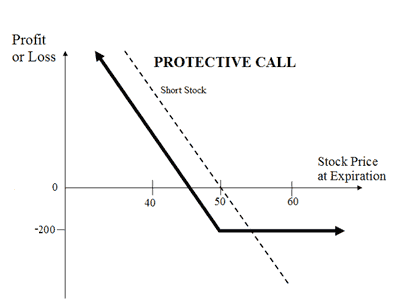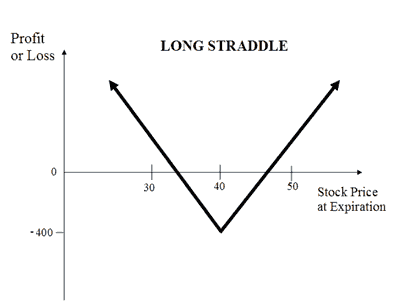 Zerodha (Trading Account)
Zerodha (Trading Account)
FREE Equity Delivery and MF
Flat ₹20/trade Intra-day/F&O
 Zerodha (Trading Account)
Zerodha (Trading Account)
FREE Equity Delivery and MF
Flat ₹20/trade Intra-day/F&O

|
|
Compare Protective Call (Synthetic Long Put) and Long Straddle (Buy Straddle) options trading strategies. Find similarities and differences between Protective Call (Synthetic Long Put) and Long Straddle (Buy Straddle) strategies. Find the best options trading strategy for your trading needs.
| Protective Call (Synthetic Long Put) | Long Straddle (Buy Straddle) | |
|---|---|---|
 |
 |
|
| About Strategy | The Protective Call strategy is a hedging strategy. In this strategy, a trader shorts position in the underlying asset (sell shares or sell futures) and buys an ATM Call Option to cover against the rise in the price of the underlying. This strategy is opposite of the Synthetic Call strategy. It is used when the trader is bearish on the underlying asset and would like to protect 'rise in the price' of the underlying asset. The risk is limited in the strategy while the rewards are unlimited. How to use a Protective Call trading strategy? The usual Protective Call Strategy looks like as below for State Bank of India (SBI) Shares which are currently traded at Rs 275 (SBI Spot Price): Protective Call Orders - SBI Stock Orde... Read More | The Long Straddle (or Buy Straddle) is a neutral strategy. This strategy involves simultaneously buying a call and a put option of the same underlying asset, same strike price and same expire date. A Long Straddle strategy is used in case of highly volatile market scenarios wherein you expect a big movement in the price of the underlying but are not sure of the direction. Such scenarios arise when company declare results, budget, war-like situation etc. This is an unlimited profit and limited risk strategy. The profit earns in this strategy is unlimited. Higher volatility results in higher profits. The maximum loss is limited to the net premium paid. The max loss occurs when underlying asset price on expire remains at the strike price. ... Read More |
| Market View | Bearish | Neutral |
| Strategy Level | Beginners | Beginners |
| Options Type | Call + Underlying | Call + Put |
| Number of Positions | 2 | 2 |
| Risk Profile | Limited | Limited |
| Reward Profile | Unlimited | Unlimited |
| Breakeven Point | Underlying Price - Call Premium | 2 break-even points |
| Protective Call (Synthetic Long Put) | Long Straddle (Buy Straddle) | |
|---|---|---|
| When to use? | The Protective Call option strategy is used when you are bearish in market view and want to short shares to benefit from it. The strategy minimizes your risk in the event of prime movements going against your expectations. |
The strategy is perfect to use when there is market volatility expected due to results, elections, budget, policy change, war etc. |
| Market View | Bearish When you are bearish on the underlying but want to protect the upside. |
Neutral When you are not sure on the direction the underlying would move but are expecting the rise in its volatility. |
| Action |
|
|
| Breakeven Point | Underlying Price - Call Premium When the price of the underlying is equal to the total of the sale price of the underlying and premium paid. |
2 break-even points A straddle has two break-even points. Lower Breakeven = Strike Price of Put - Net Premium Upper breakeven = Strike Price of Call + Net Premium |
| Protective Call (Synthetic Long Put) | Long Straddle (Buy Straddle) | |
|---|---|---|
| Risks | Limited The maximum loss is limited to the premium paid for buying the Call option. It occurs when the price of the underlying is less than the strike price of Call Option. Maximum Loss = Call Strike Price - Sale Price of Underlying + Premium Paid |
Limited The maximum loss for long straddle strategy is limited to the net premium paid. It happens the price of underlying is equal to strike price of options. Maximum Loss = Net Premium Paid |
| Rewards | Unlimited The maximum profit is unlimited in this strategy. The profit is dependent on the sale price of the underlying. Profit = Sale Price of Underlying - Price of Underlying - Premium Paid |
Unlimited There is unlimited profit opportunity in this strategy irrespective of the direction of the underlying. Profit occurs when the price of the underlying is greater than strike price of long Put or lesser than strike price of long Call. |
| Maximum Profit Scenario | Underlying goes down and Option not exercised |
Max profit is achieved when at one option is exercised. |
| Maximum Loss Scenario | Underlying goes down and Option exercised |
When both options are not exercised. This happens when underlying asset price on expire remains at the strike price. |
| Protective Call (Synthetic Long Put) | Long Straddle (Buy Straddle) | |
|---|---|---|
| Advantages | Minimizes the risk when entering into a short position while keeping the profit potential limited. |
Earns you unlimited profit in a volatile market while minimizing the loss. |
| Disadvantage | Premium paid for Call Option may eat into your profits. |
The price change has to be bigger to make good profits. |
| Simillar Strategies | Long Put | Long Strangle, Short Straddle |

Add a public comment...

FREE Intraday Trading (Eq, F&O)
Flat ₹20 Per Trade in F&O
|
|